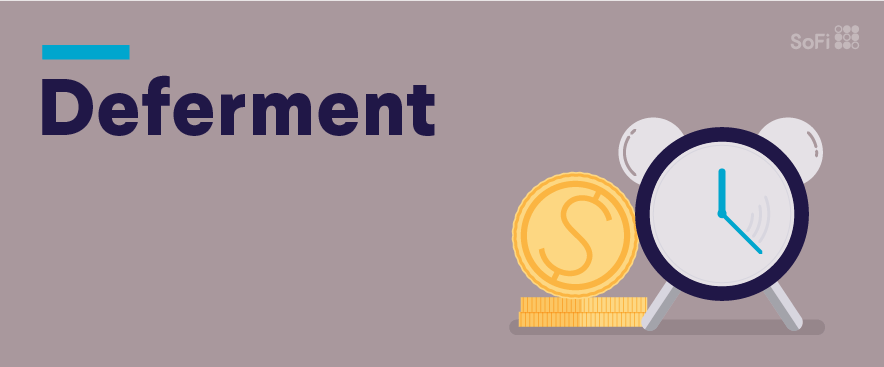4 Top Student Loan Repayment Options for Medical Residents
As a medical resident, your schedule is incredibly busy. (And even that’s an understatement.) On top of that, you’re saddled with student loan debt—and your residency salary isn’t exactly going to make a huge dent in it just yet. So what should you do about it?
There are options that can help reduce the stress of student loans—and even save you money in the long run. Here’s a quick guide to the four top student loan repayment options, so you can choose the best one for you:

1. Deferment
What it is: A temporary suspension of federal loan payments, where interest DOES NOT accrue on certain types of loans.
Pros: If you’re struggling to repay loans due to challenging short-term circumstances, it can be beneficial. Big caveat, though—residents tend not to qualify for deferment.
Cons: Not all loans are eligible for deferment, and only subsidized federal loans do not accrue interest. So if you have unsubsidized loans (typically used for medical school), your balance will still increase during deferment.
Best for: Residents who qualify. Those who have other debts to pay off first that make it a challenge to pay back loans, such as higher interest credit card debt, could be in this category.
Not great for: Residents who need a more long-term or permanent option, as interest will still accrue on unsubsidized loans, growing your balance.

2. Forbearance
What it is: A temporary suspension of loan payments, where interest DOES accrue on all loan types.
Pros: Medical residency and internship programs are usually qualifying circumstances for forbearance. As long as you meet basic requirements1, mandatory forbearance is an option that can be granted for residents up to 12 months, and be extended for up to three years, upon request.
Cons: As mentioned, interest will continue to accrue on all loans in forbearance. That means your balance will grow.
Best for: Residents with lower loan balances, or who are experiencing financial hardship where the burden of student loan payments would be significantly challenging.
Not great for: Residents with normal to high balances who have the ability to make payments and start making progress on their debt.

3. Income-Driven Repayment (IDR)
What it is: A repayment program where your monthly loan payment is a percentage of your discretionary income, typically between 10-20%. Options include PAYE, REPAYE, IBR and ICR, which vary by the percentage of income you owe and the amount of time they add to your loans.
Pros: IDR allows borrowers to keep monthly payments low without defaulting on their loans. For residents who eventually pursue Public Service Loan Forgiveness (PSLF)2, this option can lead to the greatest amount forgiven.
Cons: IDR will often extend the term of your loan to 20-25 years. Plus, your payments may not cover the full interest owed. If that is the case, interest will compound monthly, and you will be paying interest on interest.
Best for: Residents who plan to pursue federal student loan forgiveness.
Not great for: Residents who don’t plan to pursue loan forgiveness and would like the avoid compounding interest that creates a higher loan balance.

4. Medical Resident Refinancing
What it is: Refinancing is consolidating your student loans (federal and/or private) with one private lender, usually for a lower interest rate. During residency, refinancing reduces student loan payments to just $100/month. Check out SoFi’s medical resident loan refinancing rates & terms.
Pros: Refinancing simplifies your student debt by reducing your student loan payments to one low monthly payment. This option also makes it possible to avoid compounding interest during residency.
Cons: Refinancing makes you ineligible for PSLF or other federal repayment benefits. Interest will still accrue during residency, but it will not compound during that time, so you won’t pay interest on interest.
Best for: Residents who plan to work in the private sector (like a private hospital or for a private practice), and would like to reduce their interest rate on their student loans, keep payments low during residency, and save money on compounding interest.
Not great for: Residents who plan to pursue loan forgiveness or other federal repayment options by working in a public sector hospital.
It’s worth considering all your medical school loan repayment options before you dive back into the throes of residency—after all, you have patients to see and work/life balance to manage and lives to save.
Notice: SoFi refinance loans are private loans and do not have the same repayment options that the federal loan program offers such as Income Based Repayment or Income Contingent Repayment or PAYE. SoFi always recommends that you consult a qualified financial advisor to discuss what is best for your unique situation.
1 https://studentaid.ed.gov/sa/repay-loans/deferment-forbearance
2 https://studentaid.ed.gov/sa/repay-loans/forgiveness-cancellation/public-service